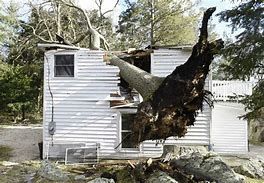Blog
Blog

By Brian Rewis
•
February 16, 2024
Loss of use coverage and additional living expenses coverage are both types of insurance provisions designed to help policyholders in the event that their home becomes uninhabitable due to a covered loss, such as fire, flood, or other catastrophic events. Here's a breakdown of each: Loss of Use Coverage: Also known as "Coverage D" in homeowners insurance policies, loss of use coverage provides reimbursement for additional living expenses incurred by the policyholder if their home becomes uninhabitable due to a covered loss. These additional living expenses may include costs for temporary housing, meals, transportation, and other necessary expenses that exceed what the policyholder would normally spend. Loss of use coverage typically has limits, either as a dollar amount or as a percentage of the total coverage for the structure of the home. Additional Living Expenses (ALE) Coverage: ALE coverage is similar to loss of use coverage and may sometimes be used interchangeably. It reimburses the policyholder for the extra costs they incur while their home is being repaired or rebuilt after a covered loss. This coverage helps maintain the policyholder's standard of living during the disruption caused by the loss. Again, expenses covered may include temporary housing, meals, transportation, and other necessary expenses. Both loss of use coverage and additional living expenses coverage are crucial components of homeowners insurance, providing financial protection and assistance to policyholders during challenging times when they cannot occupy their homes due to covered damages. It's important for policyholders to review their insurance policies carefully to understand the specific coverage limits, conditions, and exclusions associated with these provisions.

By Brian Rewis
•
February 8, 2024
The Driving Forces Behind Rising Rates: Several factors contribute to the surge in auto insurance premiums, and understanding them is crucial for motorists seeking clarity amidst the chaos. Increased Accident Frequency: With more vehicles on the road and higher levels of distracted driving, accidents are becoming more prevalent. Each accident represents a potential claim for insurance companies, leading to increased payouts and subsequently higher premiums for policyholders. Rising Repair Costs: Modern vehicles are equipped with advanced technology and sophisticated components, making repairs more expensive. From sensors to safety features, repairing a car today often requires specialized knowledge and equipment, driving up the cost of insurance claims. Catastrophic Weather Events: Extreme weather events, such as hurricanes, floods, and wildfires, can wreak havoc on roadways, leading to a surge in insurance claims. As climate change continues to impact weather patterns, insurers must adjust their rates to account for the heightened risk of natural disasters. Fraudulent Claims: Insurance fraud remains a significant issue, with dishonest individuals exploiting loopholes and falsifying claims for financial gain. The burden of these fraudulent activities ultimately falls on honest policyholders, as insurers raise rates to offset their losses. Charting a Course Forward: While the landscape of rising auto insurance rates may seem daunting, there are steps that drivers can take to mitigate the impact on their wallets: Shop Around: Don't settle for the first insurance quote you receive. Take the time to compare rates from multiple providers to ensure you're getting the best possible deal. Bundle Policies: Many insurance companies offer discounts for bundling auto, home, and other policies together. Consolidating your insurance needs under one provider could result in significant savings. Drive Safely: Maintaining a clean driving record can help you qualify for lower insurance rates. Avoid accidents and traffic violations whenever possible, and consider enrolling in defensive driving courses to further improve your skills behind the wheel. Review Coverage Needs: Periodically reassess your insurance coverage to ensure it aligns with your current needs. Dropping unnecessary coverage or adjusting deductibles can help lower your premiums without sacrificing essential protection. Explore Discounts: Inquire about available discounts for factors such as good grades (for student drivers), vehicle safety features, and mileage reductions. Taking advantage of these incentives can lead to significant savings over time. In conclusion, rising auto insurance rates present a multifaceted challenge for drivers, necessitating careful navigation and proactive measures to mitigate their impact. By understanding the underlying factors driving these increases and exploring strategies to lower premiums, motorists can navigate this terrain with greater confidence and financial stability. Remember, the road ahead may be uncertain, but with informed decision-making and strategic planning, you can steer towards a brighter, more affordable future.

By Brian Rewis
•
April 25, 2023
Insurance is a vital part of any business as it protects your business against risks and liabilities. With so many options available, it can be challenging to determine which type of insurance is right for your business. In this blog post, we will discuss the essential factors to consider when choosing the right insurance for your business. 1. Understand Your Risks The first step in choosing the right insurance coverage for your business is to understand the risks involved. Consider the nature of your business, the type of products or services you offer, and the potential risks associated with them. For example, if you are in the construction business, your business may be at risk of accidents and property damage. As a result, you may need to consider a general liability insurance policy to protect your business against such risks. 2. Determine Your Business Insurance Needs After understanding your risks, you need to determine the type of insurance coverage your business needs. There are different types of insurance policies available, such as general liability insurance, property insurance, professional liability insurance, and worker's compensation insurance, among others. Consider the specific needs of your business and the type of coverage that will adequately protect it. For example, if you have employees, you will need worker's compensation insurance to cover any work-related injuries or illnesses. 3. Consider Your Budget When choosing the right insurance coverage for your business, you also need to consider your budget. Insurance premiums can be a significant expense for businesses, so it's essential to find coverage that is affordable and provides adequate protection. However, keep in mind that the cheapest insurance policy may not always be the best option. Consider the level of coverage you need, and ensure that the insurance policy provides adequate protection against potential risks. 4. Shop Around and Compare Quotes It's always a good idea to shop around and compare insurance quotes from different providers. Different insurance companies may offer different levels of coverage and premiums for the same type of insurance policy. Consider the reputation of the insurance provider, the level of customer service they provide, and their track record in handling claims. 5. Consult an Insurance Professional Choosing the right insurance coverage for your business can be a complex process. It's always a good idea to consult an insurance professional who can help you understand your insurance needs and recommend the right coverage for your business. An insurance professional can also help you navigate the complex insurance landscape and find the best policy for your specific needs. In conclusion, choosing the right insurance coverage for your business is an essential part of protecting your business against risks and liabilities. By understanding your risks, determining your insurance needs, considering your budget, shopping around, and consulting an insurance professional, you can find the right insurance coverage for your business and ensure that you have adequate protection.
